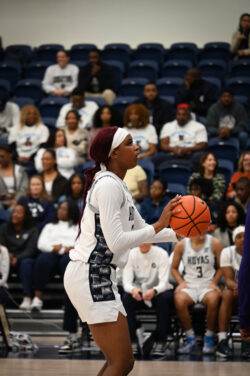From vaulting over brick walls to landing perfectly on a railing only a few inches wide, the practice known as parkour encourages one to challenge the limits of the human body. Over the past few years, students have witnessed groups of individuals pull off maneuvers all over campus that appear to defy the laws of physics.
Eli Shane, a former gymnast and parkour enthusiast who frequents the Georgetown area, defines parkour as “the fluid and efficient movement through your environment over any obstacle no matter what it is, using only your body to propel yourself.” There is no equipment or anti-gravity mechanism involved—only the human body and its unlimited potential. But what possesses these so-called traceurs to attempt these unusual and even dangerous stunts?
Originally practiced in France as a means for discipline and physical training, parkour has since spread worldwide, becoming an Internet sensation and inspiring many ordinary folks to get out and test their abilities. Many athletes have been doing parkour long before the French turned it into a defined sport and discipline. Shane found out about parkour from someone who had noticed him training outdoors.
“I started a good 12 years ago, before I knew what parkour was,” Shane said. “Somebody was like ‘You’re doing parkour?’ I checked it out and was like ‘wow, this is what I’ve been doing.’ So I looked into it more and found out what it was all about.”
What Shane discovered was much more than just an interesting fitness regimen. But even more appealing than the physical benefits are the focus and non-competitive nature that parkour fosters.
“It’s a lot of mind over body, really overcoming your mental obstacles and barriers, as well as your physical ones,” Shane said. “I see it more as setting personal goals rather than beating someone else. It’s about bettering yourself.”
This mindset draws traceurs to the Georgetown area where the many unusual structural features of the campus and neighborhood make it one of the parkour “hotspots in the metropolitan area,” according to Aaron Jackson, another former gymnast. Jackson specifically highlighted the railings by the Exorcist Stairs in addition to the walls and varied elevation around Darnall Hall and Henle Village as ideal training sites for experienced traceurs. As a result, when the World Freerunning and Parkour Federation made a stop in Washington, D.C. on their nationwide tour this August, Georgetown was one of the places Jackson insisted on showing them.
“They enjoyed it and those are some of the biggest names in the sport right now,” Jackson said. “They really enjoyed Georgetown for all the stuff it had to offer for parkour.”
Traceurs also view parkour as a great way to interact and connect with new people, making it a great way to socialize and exercise at the same time.
“Whenever I’m around I try to go out with people I haven’t met yet, train with new people, meet new people,” said Shane. “When you’re all in a group, you want to help out each other and encourage each other.”
However, each traceur takes their own interpretation of what parkour means to them. Jackson still spends time coaching gymnastics, claims parkour is more of a hobby that offers both exercise and amusement.
“To me it’s a challenging way to get around, a fun way of moving from one place to another,” said Jackson. “I like looking at a wall and instead of saying ‘I wish I had a ladder,’ I think ‘I’m going to run up this wall.’”
While participation in parkour remains limited among the Georgetown student body, there is no shortage of interest among students who see these traceurs as they walk to class. It is not uncommon for the traceurs to build up a modest audience as people try to figure out what is going on. Observation is inevitably followed by questions, which the traceurs are more than happy to answer.
“I actually love it because I’ve been trying to spread the word about it,” Shane said, who teaches his own course on parkour and coordinates training with other traceurs. “I love to go and talk to them and explain what we’re doing.”
Jackson has noticed a significant rise in the awareness of parkour. He said that more and more people are recognizing their prodigious leaps and awe-inspiring vaults as parkour, rather than having to ask what it is. Given that Georgetown is such an ideal environment for practicing parkour, it may be only a matter of time before students start leaping across the wheelchair ramp outside Henle with Shane and Jackson.





